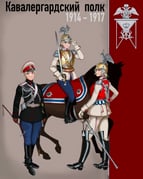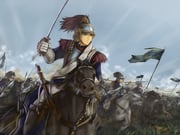cavalry helmet
A type of metal helmet traditionally worn by cavalry units (horse-mounted soldiers), prominent especially in European armies during the 19th and early 20th centuries. Also known as the Albert helmet, named after Prince Albert, consort to Queen Victoria.
Characteristics:
These helmets are typically made of polished metal (brass, steel, or German silver). Defining features often include:
- A prominent metal crest or comb running front-to-back (distinguishing it from the typically simpler spike of many pickelhaube designs), although some versions did incorporate spikes.
- A decorative front plate, often bearing a regimental or national emblem.
- Often fitted with elaborate chin scales or a chinstrap.
- May feature a plume holder for attaching a horsehair or feather plume for parade dress.
It is distinct from the pickelhaube (though some cavalry units wore Pickelhauben) and the shako. While historically accurate for cavalry, similar designs may appear in fantasy or fictional military settings.
See also:
Chin Strap
Pickelhaube (Often confused with or related; Pickelhauben are typically associated more with infantry, often made of leather/felt, and defined by a spike)
Shako (Another type of historical military headwear)




